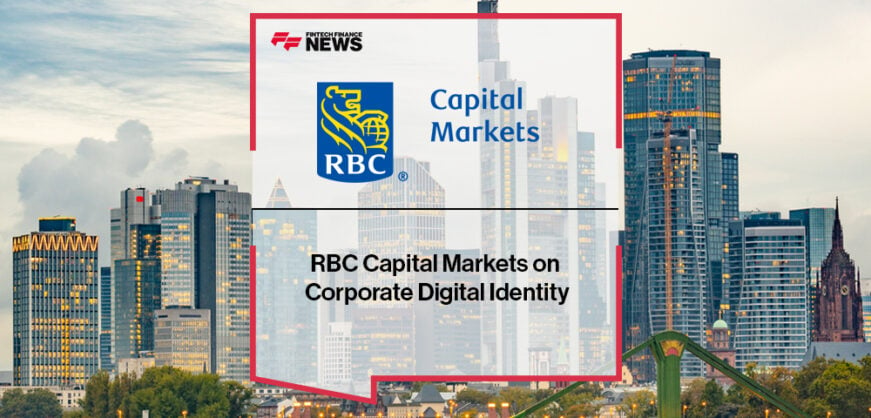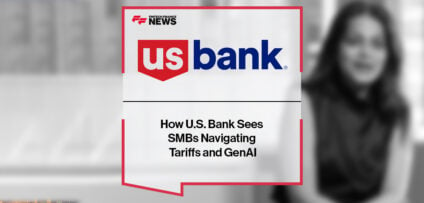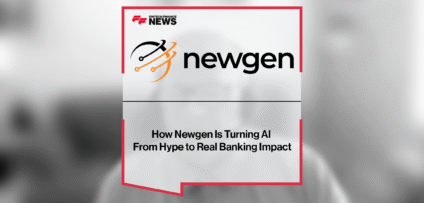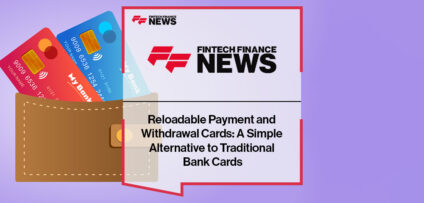Breaking News

EXCLUSIVE: Finastra at Sibos – The Future of Contextual Finance and BaaS
Late last week, we saw articles rounding up some of Sibos’ highlights, check out the Day 1, Day 2 and Day 3.
Today, we’ll be digging deeper into one such panel; Unlocking the Value of BaaS and Contextual Finance in Wholesale Banking, hosted by Finastra’s Angus Ross, featuring speakers such as Eli Rosner (Finastra), Andy Hirst (SAP), Mark Williamson (HSBC), and Valli Ardalan (Visa). Their talk elaborated on the possibilities of Contextual Finance and the future of BaaS, where both are heading in the next few years, and what needs to be done to tackle potential problems. And it’s here where we’ll be digging deeper, dissecting all the information, and really examining what should be taken away from one of Sibos’ best panels.]

– Angus Ross, Finastra.
Opening with a call back and discussion to HSBC’s 2018 paper, “Banking of the Future”, it acted as a reminder that customers nowadays need to place a lot of trust in their banks. They rely on banks to take actions for them, which will benefit them, and the evolving times – especially with the pandemic – could be argued for either testing that trust, bolstering it, or making it more necessary than ever. It helped set the tone for the rest of the panel; by looking at the past, we can better understand how to take steps forward into the future. A great start.
That mindset and trust from customers, both retail and corporate, is incredibly important. Especially to one bank in particular, who has held that trust with their customers for over 150 years. To elaborate on the then-and-now process, we heard from HSBC’s Mark Williamson on the steps being taken to maintain that bond. A firm dedication to embedded finance. After all, our market has become so digital and so open. It continues to become more digital, more open, even today; increased efforts towards financial inclusion, the surging popularity of Buy Now Pay Later, and the constant evolution of banking technology.
Everything else must evolve with these developments. So, to that end, HSBC’s goal is “putting finance at the right place, at the right time, for our customers.”
And that is the end goal of contextual and embedded finance; to access services, and to make transactions, from any time and place. Not only that but a dedication to making it easy, accessible and efficient. You can place a tech manual in front of anyone, anywhere but it is far better in the long term to interweave those benefits in a customer’s journey. And to deliver those benefits, at pace with the world, immediately? Even better.
And who better to help drive that push into contextual and embedded finance than Visa? We saw Visa’s Valli Ardalan highlight the pandemic as a catalyst for change. A trigger for evolution.
“Businesses have been really forced to reexamine the way that they pay and get paid, to stay ahead of it and ultimately thrive in today’s environment.”
– Valli Ardalan, Visa.
Is it just Visa that will be the pioneers, though? Will it be HSBC? One of the most important questions raised during the panel asked this and more; the “keys to success.” Who holds them? Who will lead the way? We have the banks but we also have the endpoint – retail and points of sale – as well as the aggregators and embedders such as fintechs. With three major forces all contributing to this age of contextual finance and BaaS, is there a clear ‘winner’ in this scenario?
A recurring theme brought here was that of collaboration. Not one side could have all the winning pieces. Rather it is the communication that all share which drives the BaaS market forward. Finastra’s Eli Rosner laid it out well. “I think it is going to be a push-pull game.” We see the money coming in from SAP, from the big brands and corporations, and then you have HSBC and Visa analyzing the dynamic demands of that market so they can step forward and provide the capabilities necessary to meet those demands. Even then, after that, you have the heart of the operation with organizations like Finastra; they bring those two sides together with an open, financial ecosystem. And they don’t just bring one and one together, they – and any other organization like them – connect both ends through thousands of relationships and bonds.
You follow the money, and what you see is a supply chain. One that requires clear roles and all players to do their part. Banks like HSBC, which are global and regulated, are always looking into how they can embed financial services into the digital ecosystem of today.
Visa, which sits neither as a beginning or ending point, is working on their network of networks strategy; a method to be a single point of connection for people to move money, which is itself a response to the industry inefficiencies that the pandemic exposed. Customers want better cost, efficiency, security, customization, and reach.
And then on SAP’s side, they have technology. Security, API knowledge, data, etc. While they’re not bankers specifically, as Andy Hirst elaborates, they commit themselves to hosting workshops and empowering banks so that technology, digital services, and applications become more widespread and more widely adopted.
“One of the things I think we’re all acknowledging, including, of course, Finastra, is that none of us can actually complete the whole mission on our own. The notion of collaborating together, of working together, is really, really critical here.”
– Eli Rosner, Finastra.
So where are the obstacles? What’s stopping this golden age of contextual finance and BaaS from really kicking into overdrive? No path is without potential wrenches in the mix. All parties involved have to be as cautious as they are ambitious.
We’re all focused inward, not outward. Any person in any particular role is likely to concentrate specifically on what they know, what they can do, and what their part is, but it’s also good to understand the bigger picture. In the context of finance and banking, it helps to look at the supply chain as a whole, to understand all the pieces of that daisy chain. While the old saying of “know what you’re good at and be good at what you know” can be applied, one also has to understand that key players like treasuries are the last to see innovation.
Not only do we face challenges in that but banks and financial institutions are noted to be afraid of increasing their risk appetite. While we don’t see what happens in the boardroom, and the exact mindset of each individual person, we also have to realize that every action a bank takes has to be beneficial. We can, however, understand where the potential lies should banks take that step forward; by sharing distribution channels, by collaborating more personally with other organizations, there’s the potential for exponential growth.
This panel was an enlightening one. Just as Angus highlights, we could listen for hours on this topic. We’re in an interesting space. To shadow some of the comments made at the beginning of this article, contextual finance is always evolving. BaaS is in high demand, and will see great profits over the next 18 months. Every side of this ecosystem from the banks, to the fintechs, to the points of sale, they’re all important. No side can truly claim themselves to be the ‘winners’ of this race. They all have a key, and the door has multiple locks.
Finastra’s panel was among the best presented (featuring a stage, great camera work, and solid sound quality that did not mask or distort any voices) and the most insightful, and stands to be one of the more important pieces that has come out of Sibos this year. As we look to the future of embedded finance, and the ecosystem that has emerged from the pandemic, we’ll soon see unprecedented growth for customers – retail and corporate, big and small, traditional and digital. Fintechs, much like Finastra, are at the heart of that; connecting and collaborating with thousands of customers from both ends of the financial ecosystem.
- RBC Capital Markets on Corporate Digital Identity Read more
- How U.S. Bank Sees SMBs Navigating Tariffs and GenAI Read more
- FinTech Connect Turns 10: The UK’s Biggest Fintech Event Returns This December Read more
- Bank of America Modernises EMEA Payments With ISO 20022 & SEPA Instant Read more
- EXCLUSIVE: “Face The Truth” – Ron Delnevo in ‘The Fintech Magazine’ Read more


















